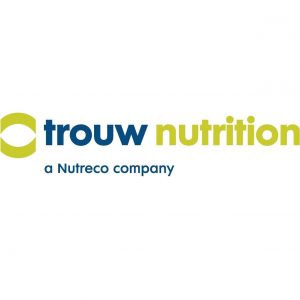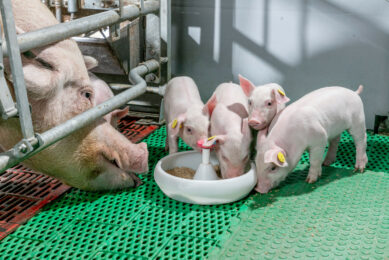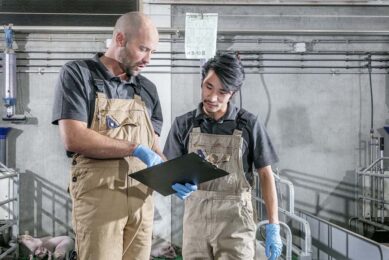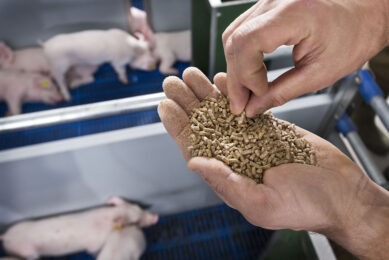Taking decisions virtually before implementation on farm
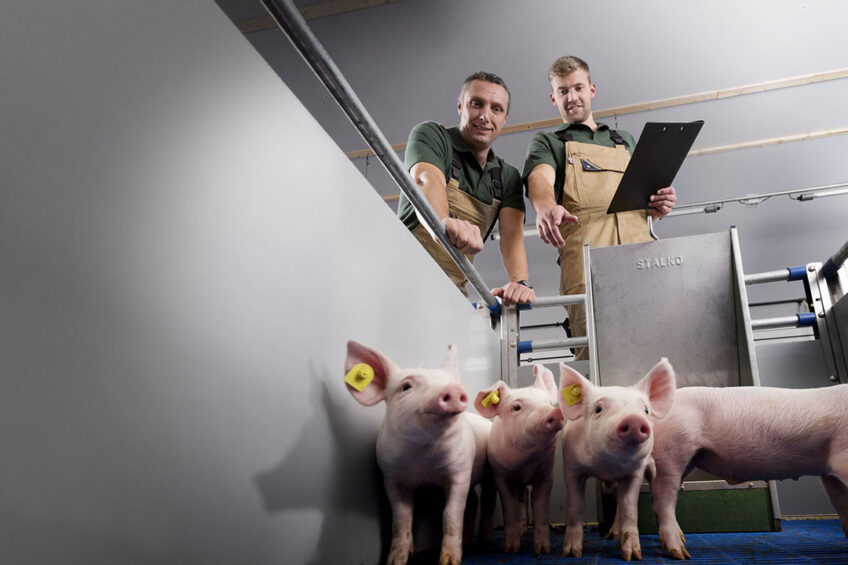
Humans have long tried to determine the shape of what is to come. Pig producers already can. With an accuracy of over 95%, we can predict the effect of decisions on economic returns, pig performance, carbon impact per pig and much more. Please meet Watson, an intelligent tool that can do it all.
Raising pigs is not a linear process, it is dependent on many variables regarding the animal, the feed, the environment, and the volatile market conditions and prices. The complexity of it all demands plain and simple answers to the questions that pig farmers have and the decisions to be made to stay on target and keep profitable. Especially in times of uncertain and disrupted market conditions, increased focus on animal health and sustainability practices, pig producers need to know the value of each investment they make. When decisions are unfounded, based on trial and error or simple guesswork, it can not only compromise animal health and performance, but also have large financial impacts on the total swine operation.
| Pork producers have complex decisions to make such as: |
|---|
|
The increasing use of predictive modelling
“We must turn guesswork into confident decision-making. And this is where the so-called prediction models come in,” explains Drew Woods, NutriOpt Models Manager at Trouw Nutrition. “These models are excellent data crunchers, able to translate different variables into valuable results, metrics, or predictions. Well known examples of predictive models are the epidemiological disease models, used to understand the dynamics and future spread of infectious diseases such as Covid-19 in humans and high pathogenic Avian Influenza or African Swine Fever in animals for example. It allows us to prepare what is coming, based on many variables and inputs. Models simulate and cocreate a reality from here to a set time moment in the future and help to make strategic decisions.”
Modelling is also not a new thing in swine production. One of the most common and straightforward aspects to animal models is the effect of nutrients and diet composition on animal growth and feed intake levels for example. “But as mentioned before, raising pigs is not a linear process and dependent on many variables. And even more variables are added to the equation these days, such as environmental impact of the production of each kilogram of pork or animal. An effective model that fits today’s challenges and of pork producers should therefore incorporate all the factors that influence results,” Woods explains.
Recreating farm reality is key for accuracy
When working with predictions and calculations, it is important to get a realistic picture of the individual farm first. Woods explains: “Getting as close to the pig farm as possible is the basis for the success of our intelligent swine decision-making tool Watson, part of Trouw Nutrition’s NutriOpt portfolio. Watson is the only tool on the market that considers all the factors that influence production outcomes, including genetics, environment, health, feed, shipment, and sustainability into a single package. It is used by technical advisers from Trouw Nutrition to help clients optimise, or by large pig producers and integrators themselves.”
“The tool allows us to capture the unique conditions of each farm (we recreate the farm’s reality) and start asking questions or simulating scenarios with an accuracy of 95-98%. We can for instance predict future feed intake levels down to the gram, economic returns down to the cent, and much more,” Woods explains.
In general, Watson follows these 5 steps to come from a certain question or need to a finding / solution:
- Identification of need or question of pig farmer
- Current data and accurate input are put in Watson to recreate farm reality
- Feed/ingredient prices, pig prices, marketing schemes and other market conditions are used to make sure the solution that fits the producer’s situation
- Watson calculates the best outcomes, based on the farmer’s needs, margins, growth performance, diet density and other criteria.
- The findings are reported back to the pig producer for decision making.
The compounding effect of improvements
Improvement, optimisation, and cost reduction can be done at several levels, depending on the market conditions, the type of farm and how often and severe certain pain points are experienced by a farmer. According to Woods, questions can be simple or complex. “With Watson we can we keep it simple and stay at the ground level (just looking at the feed costs and pig prices for example) or hoover high above the farm and add all the variable costs associated with raising animals to get an incredibly detailed financial statement of the farm (the net profits per pig for example).” Woods adds: “The good thing about our tool is that we can accommodate all kinds of questions and give pork producers clear answers where optimisation is needed (costs, animal performance, animal diets, marketing of animals or environmental impact).
When we look at animal diets for example, there are several ways we can optimise. We can for example rebalance the amino acid levels in the feed, change the nutrient density levels for certain age groups, add a feed additive, change feed ingredients, or reorganise the feed budgets. Watson will make the simulations for all these scenarios. When several elements on a farm are optimised at the same time (nutritional rebalancing, management, review of the marketing of the animals), we can even create a compounding effect of cost savings along the way, which can add up to several Euros per pig as extra profit and extra margin for the pig producer. The exact savings depend on the farm and market conditions,” according to Woods.
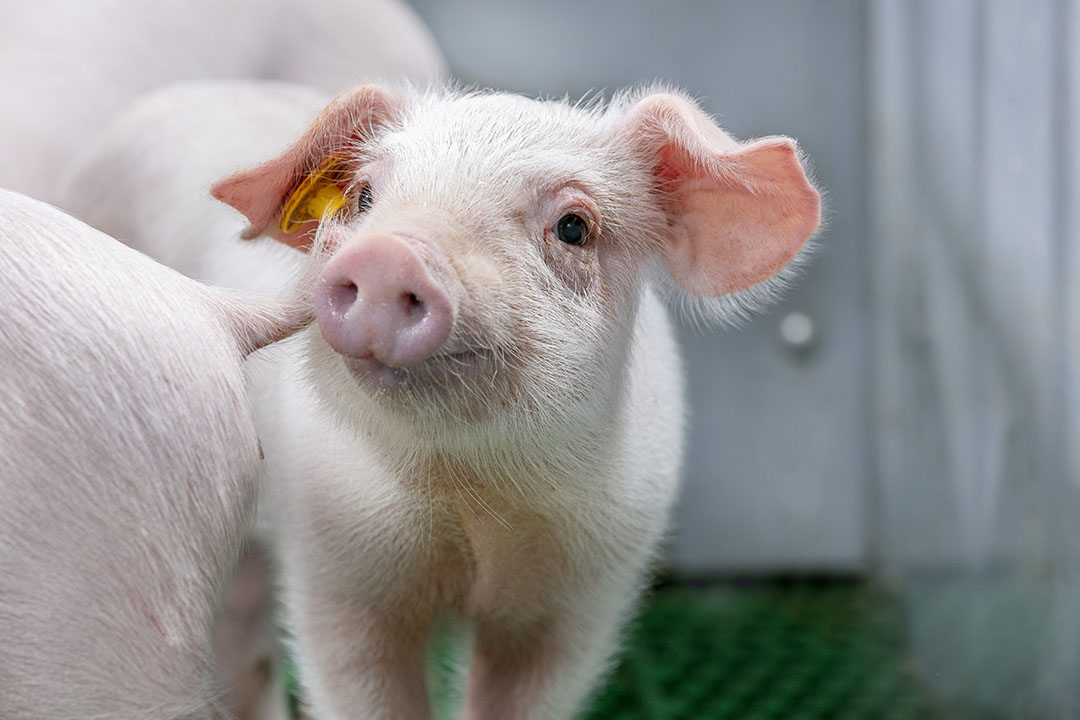
Sustainability embedded in Watson
Having such an advanced decision-making tool available for pig producers allows us to tackle complex decisions virtually and take corrective actions without waiting on the response of the animal. And this is paramount in today’s complex world of volatile market conditions, higher consumer demands and increased pressure on margins per pig. So, every decision that is made on a swine operation can have immediate, long term, or ripple effects. Producers should therefore be able to see the impact of their decisions prior to making them. “Because Watson gets so close to the actual farm conditions, we can reduce the complexity and time spent on decision making,” Woods explains. The tool is being used for quite some years already, but has seen constant improvement, fine-tuning and new features added. The latest addition is the sustainability feature built in the tool, based on globally recognised databases from the Global Feed LCA Institute (GFLI). “This is really unique because pork producers can now model changes to their operation and see how their carbon footprint can decrease with strategic changes. There are stand-alone carbon footprint calculators out there, but with Watson we offer a fully integrated approach with production, nutrition, and shipping practices. All in one tool. Along the powerful abilities Watson already has, we look very much forward to using the new sustainability metric with producers across the globe,” Woods concludes.
Do you want to know more about Watson and how it can optimise your farm? Please contact us.


